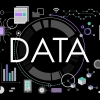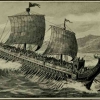Behind the Scenes of Information Systems: Facts, Data, and Information
Ikfina Nurul Izzah / Postgraduate Student, Class Reg.III-A, UIN Sunan Gunung Djati Bandung
In this era of rapidly advancing information technology, the flow of data and information moves swiftly across all aspects of life, including education and organizational activities. Information has become one of the most crucial assets in ensuring accurate, precise, and measurable decision-making. Nearly all activities within modern organizations rely heavily on the speed, accuracy, and quality of the information they possess. However, before understanding how information can drive a system, it is important to trace the foundational elements from which information is formed namely facts and data.
Facts are realities that truly occur, can be verified, and are perceivable by the senses. Meanwhile, data are raw representations of these facts, which require processing to become meaningful. When data are processed, analyzed, and interpreted accurately, they become valuable information that supports the decision-making process. Understanding the interrelation between facts, data, and information is essential to building an effective and high-quality information system.
Without proper understanding of these three fundamental concepts, organizations will struggle to identify relevant data, manage them optimally, and use them as the basis for strategic decision-making. Therefore, studying the concepts of facts, data, and information is a crucial first step to understanding how information systems operate and contribute to improving the overall effectiveness of an organization.
First, facts come from the Latin word faktus, which means something that can be perceived by the senses, proven, and truly exists. In the realm of science, scientific knowledge is classified into five categories: facts, concepts, principles, laws, and theories. A theory is an abstraction that explains the systematic relationships among social or natural phenomena. It serves to organize, classify, and explain facts to build comprehensive knowledge.
Facts are merely verified observations, yet they become meaningful when linked to theories. Their relationship is mutually reinforcing while theories are born from facts, they also guide the discovery of new facts. Facts can trigger, reformulate, or even disprove theories, while theories can predict, limit, summarize, and highlight knowledge gaps found in facts.
Second, data are raw facts that hold no meaning until processed. They can take the form of numbers, letters, sounds, images, or symbols that represent certain objects or events. Data may originate from within the organization (internal data) or from external sources (external data).
Based on their form, data are categorized into quantitative data, which are presented in numerical form, and qualitative data, which are presented in meaningful words. Data become valuable when processed to produce useful information.
Third, information is the result of processing data into something meaningful, reducing uncertainty, and enhancing knowledge that supports decision-making. The essence of information is to reflect the real conditions of an organization, monitor the use of resources, and serve as the foundation for making appropriate decisions. Information does not simply appear; it comes from data that have been processed, classified, and interpreted to make them valuable, relevant, and aligned with user needs.








